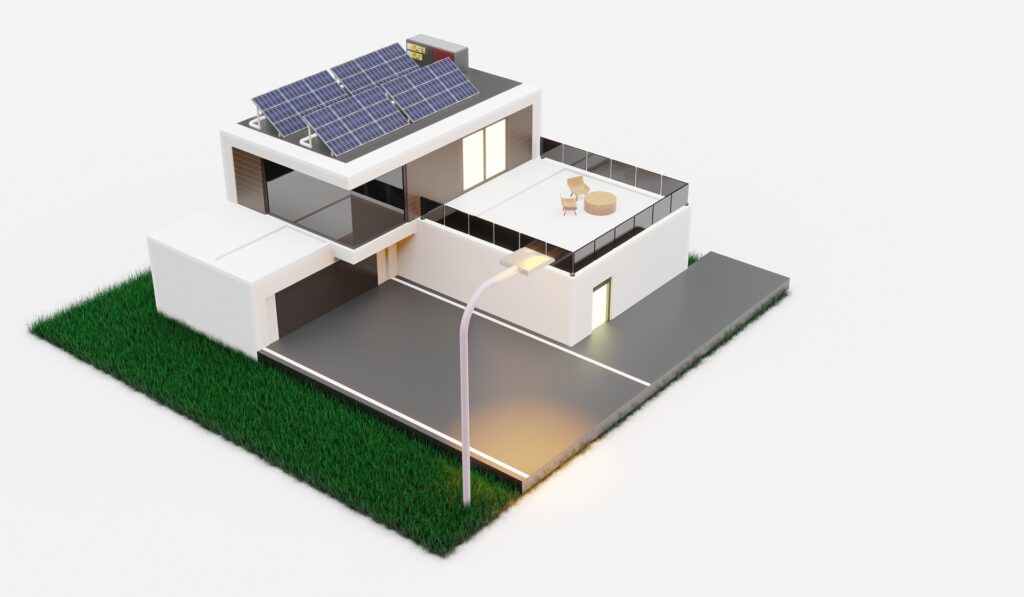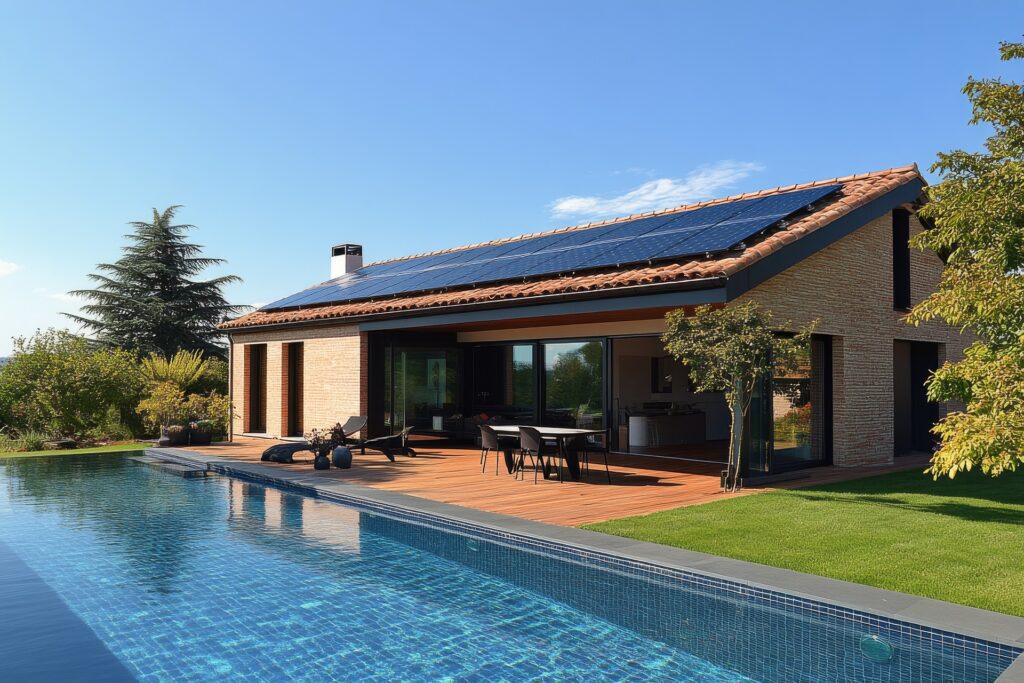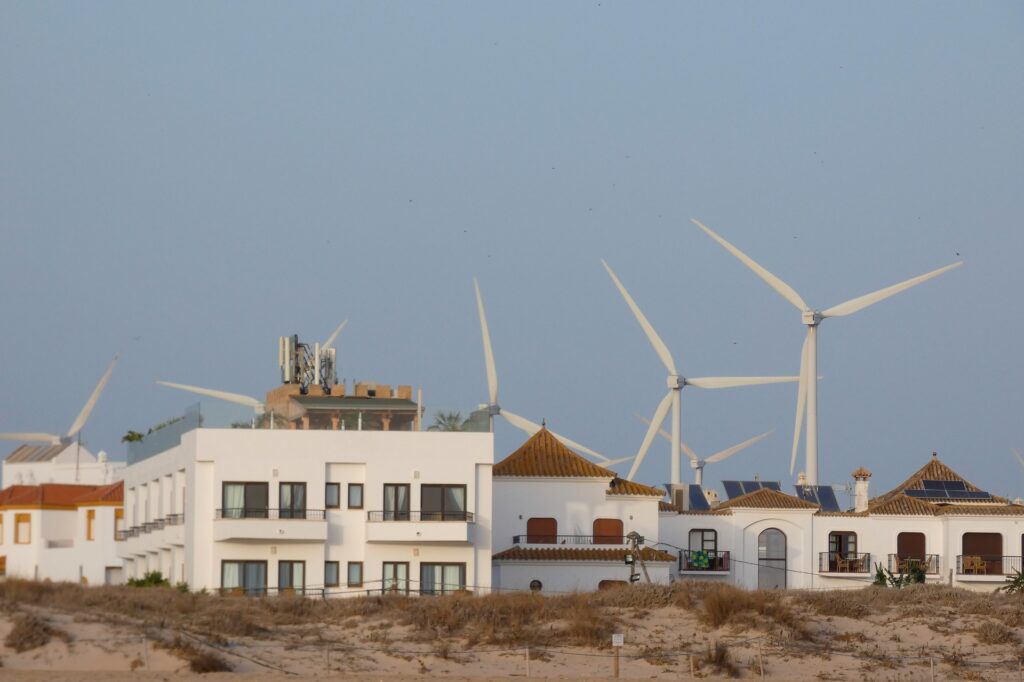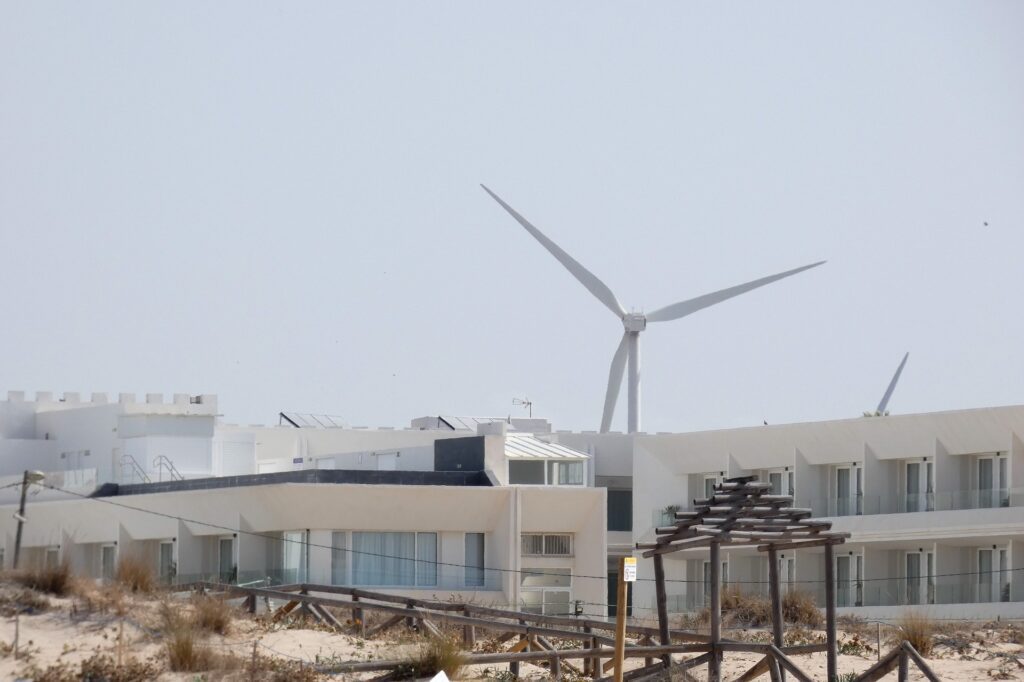Owning a villa comes with many perks, whether you’re using it as a personal retreat or a rental property. Yet, managing the ongoing costs, particularly utilities, can be a challenge. Energy bills tend to rise, especially for larger properties, making it essential to focus on energy efficiency. By making your villa more energy-efficient, you can significantly reduce monthly expenses while also supporting environmental sustainability. This is increasingly important for attracting eco-conscious tenants and enhancing the long-term value of your property. Plus, implementing energy-saving strategies doesn’t just benefit your wallet—it helps the planet too.

In this article, we’ll cover actionable tips to improve your villa’s energy efficiency, lower your operating costs, and boost your property’s appeal.
Why Energy Efficiency Matters for Villas
Energy efficiency is a key factor in reducing management costs, especially for large properties in tropical climates or regions with extreme temperatures. Villas, which often rely heavily on air conditioning, heating, and lighting, can accumulate high energy bills if these systems are not optimized. By enhancing your villa’s energy efficiency, you can significantly lower utility expenses, creating long-term savings that positively impact your bottom line.
Energy-efficient upgrades also make your villa more attractive to renters, particularly those who prioritize environmental responsibility. Many modern tenants seek properties that align with sustainable living practices, and a villa equipped with energy-saving features is an attractive option. Additionally, improving your villa’s energy performance reduces greenhouse gas emissions, helping to protect the environment and reduce your overall carbon footprint. This combination of financial savings and environmental benefits makes energy efficiency a crucial aspect of villa management.
Key Areas to Focus on for Energy Efficiency
When optimizing your villa’s energy efficiency, it’s crucial to address key areas that consume the most energy, such as heating, cooling, lighting, and appliances. Focusing on these areas will help reduce energy consumption, lower your utility bills, and create a more sustainable property.
1. Insulate and Seal the Property
A well-insulated villa can dramatically reduce the need for heating and cooling, making it one of the most effective ways to improve energy efficiency. Inspect your villa for any drafts around windows, doors, and roofs that could be causing heat loss or gain. Proper insulation in the walls, attic, and flooring helps maintain a consistent indoor temperature, reducing reliance on air conditioning or heating systems.
Consider upgrading to double-glazed windows or energy-efficient glass to prevent heat from entering the villa during hot months and escaping during cooler seasons. Sealing gaps around windows and doors with weather stripping also reduces energy wastage.
2. Upgrade to Energy-Efficient Appliances
Upgrading to energy-efficient appliances is a simple and effective way to cut down on energy consumption. These appliances use less power while providing the same level of performance as standard models. Look for Energy Star-certified appliances or equivalent ratings, as they are designed for higher energy efficiency.
This is especially important for high-energy-use items like refrigerators, washing machines, dishwashers, and air conditioning units. Encourage tenants to use energy-saving modes on appliances to further reduce consumption.
3. Optimize Your HVAC System
Heating and cooling systems are often responsible for a large portion of a villa’s energy use, so ensuring that your HVAC system is running efficiently is crucial. Regular maintenance, such as cleaning or replacing filters, ensures the system runs smoothly and consumes less energy.
Installing a smart thermostat allows for better temperature control, adjusting based on occupancy patterns to save energy when the villa is unoccupied. Smart thermostats can also be controlled remotely, giving you or your tenants greater flexibility and control over energy use.
4. Switch to LED Lighting
Switching to LED lighting is another easy way to boost energy efficiency. LED bulbs consume up to 75% less energy than traditional incandescent bulbs and last much longer, making them ideal for reducing electricity costs in your villa.
Installing motion sensors or timers in common areas or outdoor spaces can further reduce energy waste by ensuring lights are only on when needed. This simple upgrade can make a significant difference, especially in larger properties.

5. Install Solar Panels
Investing in solar panels is one of the most impactful energy-efficient upgrades you can make. Solar panels allow you to generate electricity directly from sunlight, reducing or eliminating your reliance on the grid and lowering utility bills significantly.
While the initial cost of installation can be high, many regions offer government incentives or rebates to help offset the expense. Over time, the savings on energy costs can outweigh the initial investment, making solar panels a smart, sustainable choice for villa owners.
6. Use Energy-Efficient Water Heaters
Water heating is another area that can affect overall energy consumption. Consider installing tankless water heaters or solar water heaters, which only heat water when it’s needed, rather than maintaining a full tank of hot water. This not only saves energy but also reduces your water heating costs.
For existing water heaters, lowering the temperature setting can help conserve energy, and encouraging tenants to use cold water for laundry further minimizes energy use related to water heating.
7. Implement Shading and Landscaping Solutions
Natural shading is an effective way to reduce the villa’s heat gain during the hotter months. Planting trees or adding pergolas around your property can lower the need for air conditioning by blocking direct sunlight.
Additionally, installing blinds, awnings, or reflective window films can prevent excess heat from entering the villa, helping to keep the interior cooler and reducing the load on your cooling systems. This is a low-cost, eco-friendly solution to enhancing energy efficiency.
8. Water-Saving Fixtures
Water conservation also plays a role in energy efficiency, particularly in regions where water costs are high. Installing low-flow fixtures in bathrooms and kitchens helps reduce water usage without compromising performance. Dual-flush toilets are another effective option, providing different water levels based on the need, contributing to overall efficiency and reduced utility costs.

Monitoring and Managing Energy Consumption
To fully optimize your villa’s energy efficiency, regularly tracking and managing energy usage is key. One of the best tools for this is installing smart energy meters, which allow you to monitor energy consumption in real-time. These systems provide valuable insights into how and when energy is being used in your villa, helping you make informed decisions to reduce consumption. Smart meters can also alert you to any unusual spikes in energy use, which may indicate an appliance malfunction or other issue that needs attention.
By closely monitoring energy usage, you can pinpoint areas where efficiency improvements are needed, such as reducing excessive air conditioning use, upgrading appliances, or addressing insulation problems.
In addition to using smart meters, encourage your tenants to adopt energy-saving habits. Providing practical tips can make a significant difference in overall consumption. For example, remind tenants to turn off lights when not in use, adjust thermostats before leaving the villa, and unplug appliances when they’re not needed. Even small changes in behavior can lead to noticeable reductions in energy bills, benefiting both the environment and your bottom line.
Fostering a culture of energy consciousness among tenants not only helps lower management costs but also aligns with growing tenant preferences for eco-friendly living environments. This can make your villa more attractive to potential renters, adding another layer of appeal in an increasingly environmentally aware rental market.

Conclusion
In conclusion, optimizing your villa’s energy efficiency is a strategic move that yields multiple benefits. By focusing on key areas like insulation, energy-efficient appliances, HVAC optimization, LED lighting, solar panels, efficient water heaters, shading solutions, and water-saving fixtures, you can significantly reduce energy consumption and lower utility bills. Implementing smart energy monitoring systems and promoting energy-conscious habits among tenants further enhances these savings. Not only does this approach reduce management costs, but it also increases your property’s appeal to eco-conscious renters and contributes positively to environmental sustainability. Embracing these energy-efficient strategies ensures your villa remains competitive and responsible in today’s environmentally aware rental market.
FAQ: Optimizing Your Villa’s Energy Efficiency
Improve insulation, upgrade to energy-efficient appliances, use LED lighting, and consider solar power to reduce overall energy consumption.
Focus on insulating the roof, walls, and windows. Double-glazed windows and energy-efficient doors can significantly reduce heat transfer.
Yes, installing solar panels can drastically cut energy bills, especially in sunny regions, while providing a sustainable energy source.
Use ceiling fans to circulate air, install programmable thermostats, and ensure your villa is well-insulated to maintain a consistent temperature.
Switch to LED or CFL bulbs, which consume less energy and have a longer lifespan compared to traditional incandescent lighting.
Yes, energy-efficient appliances use less electricity, which can significantly reduce your energy bills over time, making them a smart investment.
Smart thermostats, lighting, and appliances allow you to control energy use more efficiently, automatically adjusting settings when not in use.
Energy-efficient windows reduce heat loss and gain, improving insulation and lowering heating and cooling costs.
Yes, you can retrofit by improving insulation, installing energy-efficient windows, upgrading HVAC systems, and incorporating solar power.
Planting trees or shrubs can provide natural shade and windbreaks, reducing the need for air conditioning in the summer and protecting your villa from cold winds in the winter.
